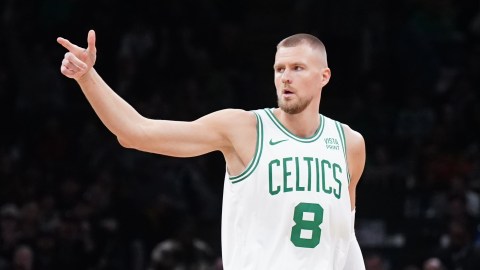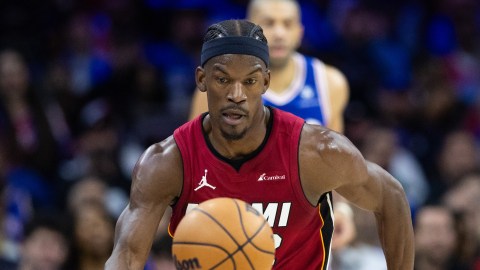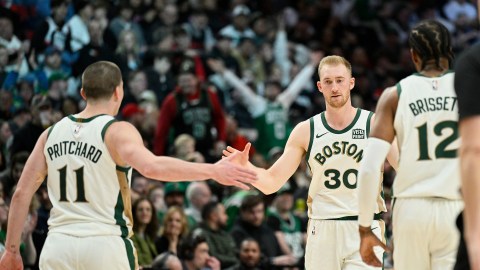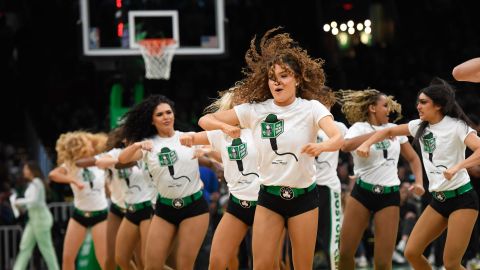 The start of training camp almost always brings a surprise for Jeff Green.
The start of training camp almost always brings a surprise for Jeff Green.
In one case, it was a life-changing surprise, when he was diagnosed with an aortic aneurysm in the fall of 2011 and was forced to miss the entire season. Most years, however, the surprise has been a bit more mild. Rather than life-threatening, it’s merely career-altering.
In essence, Green walks in the door and hears this: “Hey, welcome back, Jeff. We’ve completely revamped your role. Take care.”
And Green rolls with it.
“That’s what I came into this league as, a player without a position,” Green said. “I worked hard to develop my game to be at the point I am now, where I can play four positions, even all five. I like being that player who can be put in a game at any position, in any kind of situation. I enjoy the challenge of switching up positions each game.”
Observers have looked far and wide for an explanation for Green’s inconsistency, and this might be part of it. In a way, he might be a victim of his own versatility. Since coming into the NBA, Green has played as a power forward, a small forward, a stretch-forward and, this season, as a hybrid forward/guard for a Celtics team in need of scoring punch on the wing. Because Green can physically do just about everything on a basketball court, he tends to be the last guy his coaches slot into the rotation.
The point guard goes here. The center goes there. Sprinkle in a shooter, a scorer or a rebounder, and whatever’s left, just throw Green into that spot. He can handle it.
Celtics coach Brad Stevens mostly has turned to Green as a small forward this season, because that’s where Green is needed. Still, Stevens doesn’t seem convinced Green is a natural three, or that Green has a natural position at all. That just happens to be where Stevens has used him.
“The way that our team is built from the standpoint of personnel at the three, it’s really important that him or Gerald [Wallace] is in the game at the three most of the time, simply because of size or their ability to guard that bigger wing,” Stevens said. “So that means those guys are going to be there a lot, because we don’t have anybody else that really fits that bill.”
Green is prone to wild swings in his production, this season being no exception. Although he has been a bit more steady, particularly on the road, where he is averaging 17.7 points per game while shooting 43 percent on 3-point attempts, it’s not unusual for him to score in single digits one game and more than 30 points the next. His point totals in the last 15 games have been 4, 13, 12, 22, 12, 39, 16, 8, 14, 18, 8, 36, 17, 18, 29. He’s all over the map.
Such inconsistent production has led to Green and the Celtics becoming sensitive to any criticism of the 27-year-old forward. Stevens could keep a recording of himself saying “we need to do a better job of putting Jeff in positions to be successful” and replay it whenever a reporter asks about Green’s up-and-down performance. When Green was asked a relatively benign question last week about things he needed to “improve,” he bristled after mishearing the question and responded, “I don’t have to prove nothing to nobody.”
Despite the uncertainty over what Green can provide from game to game, the Celtics won’t stop going to him. They can’t, really. Until Rajon Rondo’s right knee fully heals, Green stands alone as the team’s greatest potential threat every game. When he is on, as he was Monday against the Milwaukee Bucks, he can make scoring 29 points look effortless, no matter which position he plays. In at least one sense, Green has been one of the few players Stevens can count on in this injury-riddled campaign. Along with Brandon Bass, Green is one of just two players to appear in every game for the Celtics this season.
So as Rondo and Avery Bradley shuffle in and out of the lineup, and Jared Sullinger battles through two injured hands, a sore knee and a balky back, Green remains a constant. He’s started all 53 games, 42 of them at the three, 11 of them as a combination two/three beside Wallace. The Celtics are just 3-8 when Green and Wallace start together on the wings, which is probably more of an indictment on the state of the roster than on those two players specifically.
“One of our biggest areas of depth is the 4-5, and it’s hard to say you play one of those guys less right now and push [players at other positions] down — more so now than before, simply because we’ve got some healthy guards,” Stevens said. “There were a few games where we had to play Jeff at the two or the three because we literally had only one sub off the bench. Now, you could potentially see a little bit more of that.”
Playing Green at shooting guard or power forward more often probably isn’t the answer. Then again, playing him solely at small forward might not be, either. Although he is in his sixth professional season, Green is still a player in transition. He came into the league without a position, dabbled as a swing-four in Seattle and Oklahoma City, got traded to Boston, missed an entire season, came off the bench for a veteran team with championship hopes and now is a regular starter on a rebuilding club.
He knows he has been inconsistent, and he hears the criticism — perhaps a bit too much. He doesn’t claim to be the perfect player, but he aspires to be that. As he enters what should be the prime of his career, Green still talks about wanting to grow his game.
“It’s still a work in progress,” Green said. “Each year, my role has been different, so it’s never been set in stone what Jeff Green is going to bring into the year, because it’s unknown. This year, I didn’t plan on coming in as a two, but it happened that way. My first year, I didn’t plan on coming in and playing the four, but it happened that way.
“I’ve just got to continue to work on my game and improve in all areas of my game so I can continue to be that player who can play multiple positions, because that means I always have an excuse to be on the floor.”
Ultimately, the problem with Green and his detractors might be one of conflicting expectations. What some might see as consistency, Green sees as stagnating his growth. He doesn’t want to settle his role if it means losing the ability to expand his role in the future. The Celtics and those who watch them have been begging for Green to offer some predictability, while Green still aspires to surprise people.
Have a question for Ben Watanabe? Send it to him via Twitter at @BenjeeBallgame or send it here.



